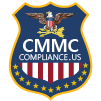What Is Controlled Unclassified Information (CUI) and Why Should You Care?
In today’s digital world, data is everything. But not all data is created equal. Some types of information, while not classified, are still sensitive enough to need protection. That’s where Controlled Unclassified Information (CUI) comes in. If you’re new to cybersecurity or just trying to understand the growing security demands on companies that do business with the U.S. Department of Defense (DoD), this post will help you grasp what CUI is, why it matters, and how it’s managed.
What is CUI?
CUI refers to information that the federal government creates or possesses – or that ca contractor creates or possesses on behalf of the government that requires safeguarding or dissemination controls but is not classified. Think of it as “important, but not secret.” Examples might include engineer drawings, project schedules, financial data, or medical records under government contracts. What makes it “controlled” is that the law, regulations, or government policies dictate that this kind of information needs to protect from unauthorized access.
Why Does CUI Matter?
Imagine you’re a small business making components for fighter jets. The schematics you receive from the government aren’t classified, but they’re still sensitive. If leaked, they could put national security – or your own business reputation at risk. All in all, CUI is important because it protects sensitive information that isn’t considered “classified”, supports national security by prevented unwanted access to defense-related data, and ensures your company meets federal contracting requirements.
How is CUI Managed?
To protect CUI, the U.S. government established standards that companies must follow. Chief among them is the Cybersecurity Maturity Model Certification (CMMC). This program requires contractors to demonstrate they have the proper cybersecurity measures in place to safeguard CUI before they can win or renew a contract. At a minimum, companies must implement the controls found in NIST SP 800-171—a set of 110 security requirements covering access control, incident response, system integrity, and more. Depending on the type of information and the contract’s sensitivity, the required CMMC level varies.
- Level 1: For companies handling Federal Contract Information (FCI), a lower sensitivity tier.
- Level 2: Required for companies handling CUI. Includes all 110 NIST SP 800-171 controls.
- Level 3: Applies to highly sensitive CUI and includes advanced protections drawn from NIST SP 800-172.
What Should You Do?
If you think your company may handle CUI—even indirectly as a subcontractor—you need to:
- Understand whether your work involves CUI.
- Implement the required security controls.
- Document everything clearly in your System Security Plan (SSP).
- Prepare for assessments, which may include self-assessments or third-party audits depending on your CMMC level.
All in all, CUI might sound like just another government acronym, but it represents a serious commitment to protecting sensitive information in the digital age. If your organization works with the government—or wants to—understanding and protecting CUI isn’t just good practice. It’s a requirement.
Whether you’re a business owner, IT manager, or someone just curious about cybersecurity, learning about CUI is a smart step toward securing the future of your organization and our national interests.
Learn more with us today at cmmccompliance.us/contact-us
The Brea Networks Cyber Security Compliance Team




